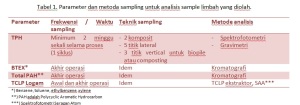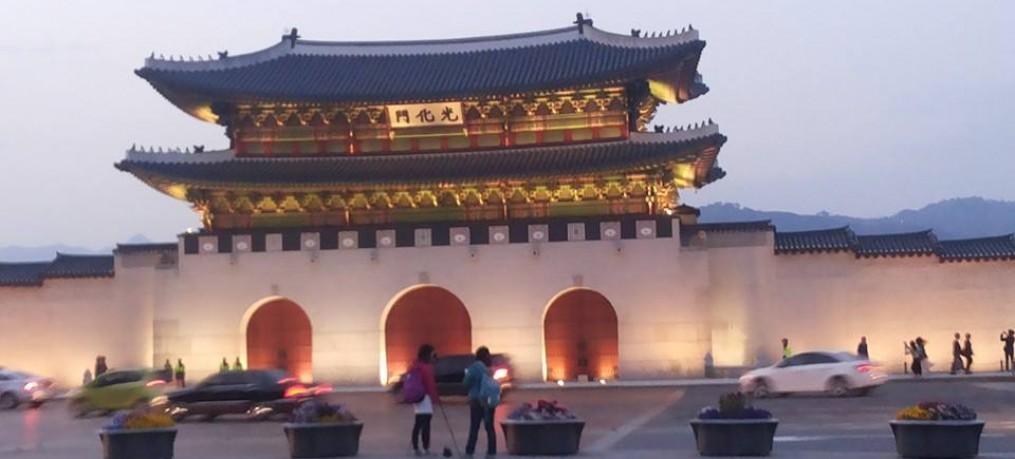Evaluasi kinerja pengolahan
- Keberhasilan proses pengolahan secara biologis dalam menurunkan kadar TPH/ oil content sampai memenuhi criteria yang dipersyaratkan dievaluasi untuk melihat efektifitas penguraian limbah minyak bumi secara biologis dengan ketentuan waktu maksimum pengolahan adalah 8 (delapan) bulan.
- Jika proses pengolahan memakan waktu lebih dari 8 (delapan) bulan, maka evaluasi ulang dilakukan untuk meningkatkan kinerja proses pengolahannya.
KRITERIA HASIL AKHIR PENGOLAHAN
Selama proses pengolahan secara biologis ini dilakukan, maka beberapa parameter dianalisis dengan
ketentuan sebagai berikut :
- Analisis limbah :
a. Analisis Kimia

b. Analisis pendukung
– Analisis terhadap produk hasil penguraian limbah minyak bumi (TPH) akibat kegiatan mikrobiologis dapat dilakukan untuk melihat komponen dan konsentrasi senyawa hidrokarbon, seperti senyawa yang terdapat di dalam kelompok C6-C15.
– Analisis terhadap parameter yang berhubungan dengan proses mikrobiologis dapat dilakukan sebagai data pendukung untuk efektifnya pengolahan, diantaranya adalah penghitungan jumlah total bakteri, biomassa unsure karbon, pengukuran respirasi, fiksasi nitrogen dan lain-lain.
2. Analisis sampel air tanah dari sumur pantau
Sampel air tanah diambil dari sumur pantau yang dipasang secara representatif di daerah hulu dan hilir minimum pada saat awal operasi, selama proses dan akhir operasi. Parameter yang diukur adalah pH dan Electrical conductivity (EC) yang diukur minimum 2 minggu sekali serta analisis konsentrasi TPH minimum 3 (tiga) bulan sekali.
3. Analisis sampel tanah
Pada kondisi air tanah dalam (> 50 m), maka cukup sample tanah yang dianalisis untuk konsentrasi TPH dengan pengambilan sample tanaha pada kedalaman 2 m di bawah lapisan paling dasar unit pengolahan minimum 1 (satu) bulan sekali.
4. Analisis sample air lindi
Analisis sample air luapan atau lindi yang dibuang ke lingkungan diperlukan sebagai limbah cair mengacu kepada KepMen LH No. 42/1996 jo. KepMen LH No. 09/1997 (baku mutu limbah cair bagi kegiatan minyak, gas dan panas bumi) minimum 1 (satu) bulan sekali.
bersambung



